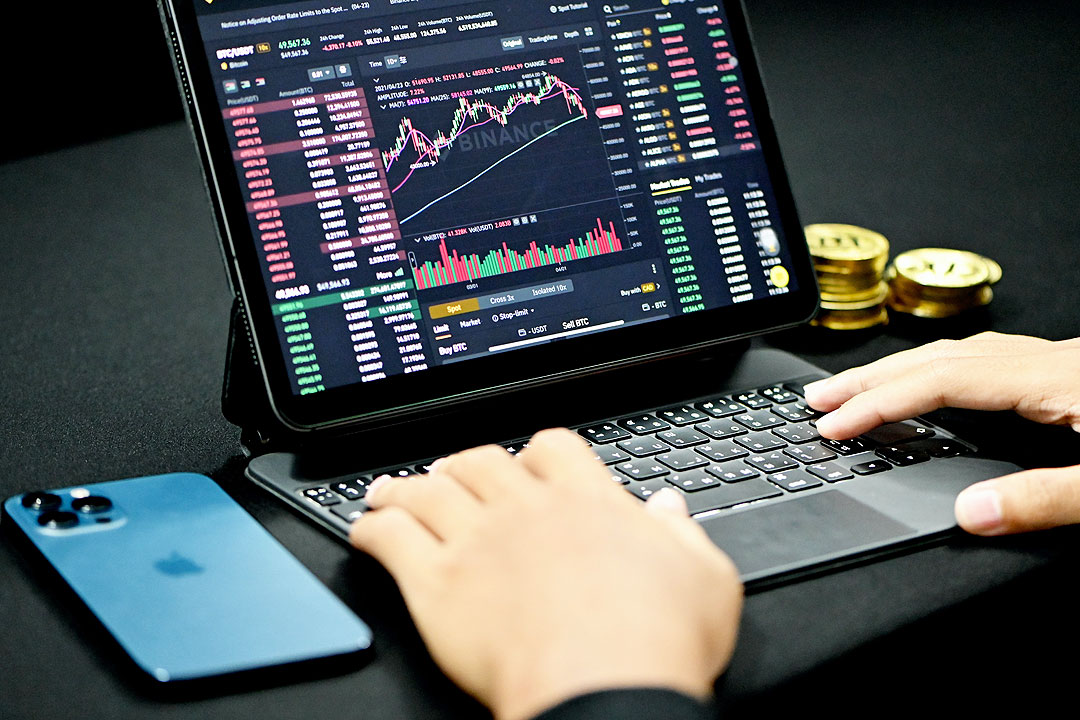
The Block Box
By Donald Lim

Cryptocurrency trading can be an exciting and potentially lucrative activity, but it also involves a significant amount of risk. The value of digital currencies such as Bitcoin, Ethereum, and Litecoin can be highly volatile and subject to sudden price swings, making it difficult for traders to make profitable trades without proper analysis. I have purposely not engaged with it for the past years, only because I believe I should not be going into something I do not totally understand.
True enough, for reasons only a few really know, the price of Bitcoin has surged to its highest level since June 2022, approaching $30,000. This recent price rally may be due to several factors, including renewed interest from retail investors, positive news from institutional investors, and increased adoption by merchants.
And although there are some challenges that Bitcoin is facing, including regulatory scrutiny and concerns about its environmental impact, the recent price surge may be a sign that the cryptocurrency is continuing to gain acceptance and popularity amidst the issues faced by banks in the US.
But how do you read these trends and decide your next steps in terms of your own investments? A seasoned crypto trader friend mentioned that it is no different from analyzing forex trading and employs a simple method that many experienced traders practice, which is technical analysis.
So, he had always been interested in cryptocurrency but never knew how to make a profit from it. He would buy and sell, hoping to make money, but never seemed to get ahead. That’s when he discovered technical analysis.
Defined, technical analysis is a method of analyzing data to predict market trends. By using charts and technical indicators, traders can identify buying and selling opportunities that they wouldn’t have seen otherwise, just like in the case of Bitcoin.
This friend of mine started studying charts and looking for patterns in the data. He learned how to read candlestick charts. He also studied technical indicators. We will talk about these in detail later.
At first, my friend made a few mistakes. He misread a chart or misunderstood an indicator and ended up losing money on a trade. But he didn’t give up. Instead, he learned from his mistakes and kept analyzing the data to find new opportunities.
Eventually, my friend started making profitable trades based on his technical analysis. He was able to identify trends and patterns that he wouldn’t have seen without this type of analysis. And best of all, he found it to be a really fun and rewarding activity.
Now, let’s dive a little deeper and take a closer look at some of the key concepts and tools used by technical analysts.
CHARTS AND GRAPHS
The first step in technical analysis is to study charts and graphs of past market data. In cryptocurrency, this usually means looking at candlestick charts, which show the opening, closing, high, and low prices of a cryptocurrency over a certain time period. By analyzing these charts, traders can identify trends and patterns that may indicate future price movements.
Candlestick charts can be used to identify key levels of support and resistance, which are price points where buying or selling pressure is strong enough to prevent the price from moving beyond that level. Support levels are areas where buying pressure is strong enough to hold the price up, while resistance levels are areas where selling pressure is strong enough to push the price down.
TECHNICAL INDICATORS
In addition to studying charts and graphs, technical analysts use various technical indicators to help them identify trends and predict future price movements. These indicators are based on mathematical calculations of market data, such as price and volume.
Some common technical indicators used in cryptocurrency trading include moving averages, relative strength index (RSI), and Bollinger Bands.
Moving averages are used to identify trends and smooth out price data. By calculating the average price of a cryptocurrency over a certain period of time, traders can plot the data on a chart and use different types of moving averages to suit their trading strategies.
Another technical indicator used in cryptocurrency trading is the Relative Strength Index (RSI), which is a momentum indicator that measures the speed and change of price movements. It compares the average gain and loss of a cryptocurrency over a certain period of time and plots the result on a scale of 0 to 100. Traders use the RSI to identify overbought or oversold conditions, which can indicate potential buying or selling opportunities.
Bollinger Bands measure the volatility of a cryptocurrency. It consists of three lines on a chart: a simple moving average, an upper band, and a lower band. The upper and lower bands are usually two standard deviations above and below the moving average, respectively. By analyzing how the price of a cryptocurrency interacts with the upper and lower bands, traders can identify potential entry and exit points for trades.
SUPPORT AND RESISTANCE LEVELS
As mentioned earlier, support and resistance levels are key concepts in technical analysis. Traders use support and resistance levels to identify potential entry and exit points for trades.
For example, if a cryptocurrency is trading within a range between two key support and resistance levels, a trader may look to buy when the price approaches the support level and sell when it approaches the resistance level.
TRENDS
Trends are one of the most important concepts in technical analysis. Traders use trend lines to identify the direction of the market, whether it’s up, down, or sideways. By identifying trends, traders can make more informed trading decisions and potentially profit from price movements.
Technical analysis can help traders make more informed trading decisions and potentially minimize risk, thus increasing their chances of making profitable trades.
While technical analysis can be a powerful tool for cryptocurrency traders, it is important to remember that the value of these digital currencies can be volatile and unpredictable. Amidst all these analyses, in the end, no one really has a crystal ball. For me, trade not to earn, but to learn.
Dr. Donald Lim is the founding president of the Blockchain Association of the Philippines and the lead convenor of the Philippine Blockchain Week. He is also the Asian anchor of FintechTV.